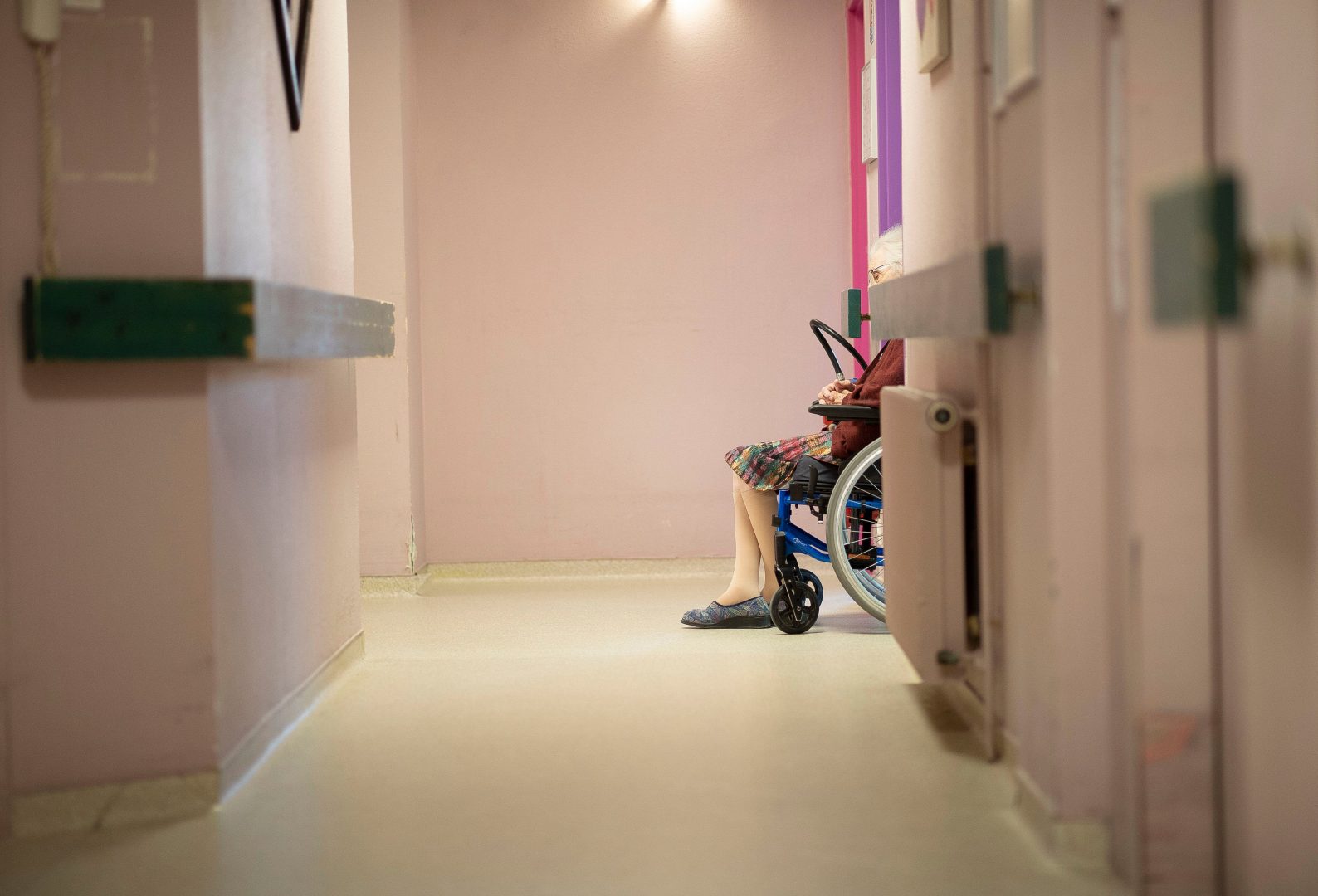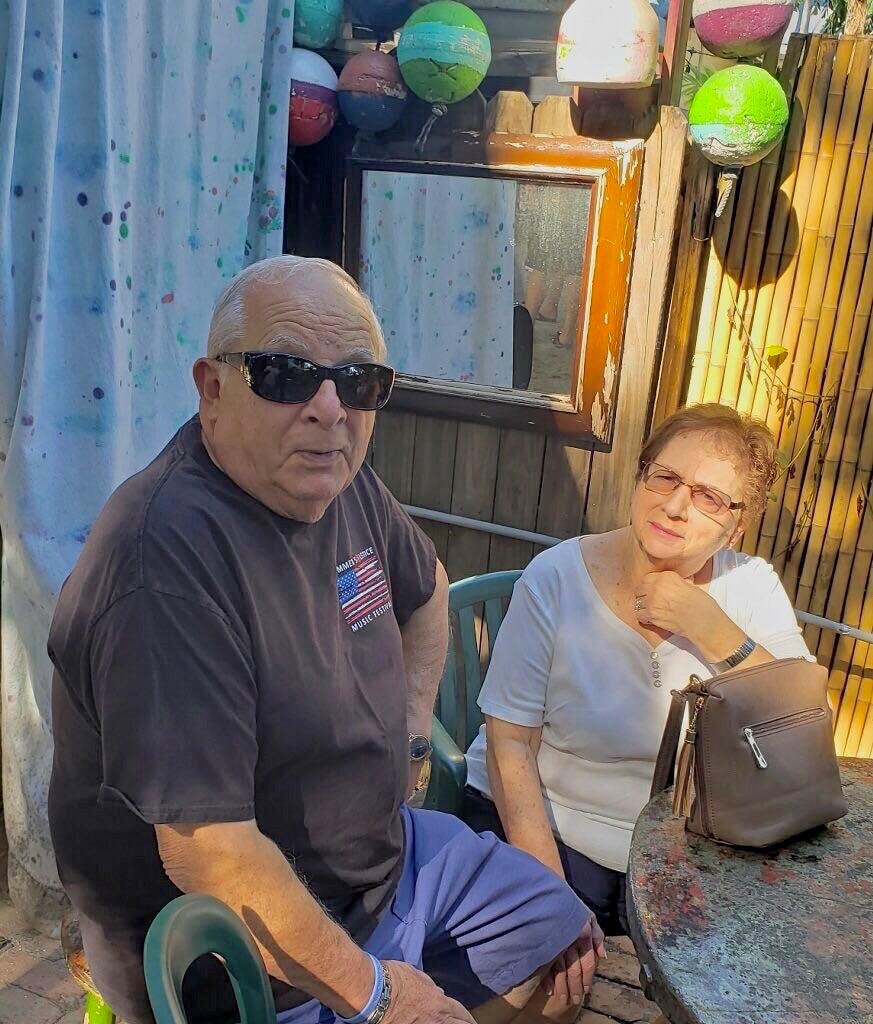
Pennsylvania has so far declined to release the names of the more than 400 facilities with reported cases and deaths.
Jean-Francois Badias / AP Photo

Pennsylvania has so far declined to release the names of the more than 400 facilities with reported cases and deaths.
Jean-Francois Badias / AP Photo

Jean-Francois Badias / AP Photo
Pennsylvania has so far declined to release the names of the more than 400 facilities with reported cases and deaths.
What you should know
» Coronavirus facts & FAQ
» Day-by-day look at coronavirus disease cases in Pa.
» What the governor’s stay-at-home order means
(Philadelphia) — John Stagliano never was much of a hospital guy.
“Anytime he ever went was when something bad happened,” said his son, also named John Stagliano. “I guess he had that, ‘Nothing ever good is gonna be coming from there,’ kind of thing.”
That made it all the more difficult when the elder Stagliano contracted the novel coronavirus at the end of February. At 82, he was statistically at a high risk for the disease to become serious, and potentially fatal. But despite his children’s pleading, he would not be admitted to the hospital.
“He just didn’t want to be there,” said his son John.
So he got his father set up to receive fairly intensive care in the basement of the Exton home the elder Stagliano shares with his wife, Catherine Stagliano. A home health care team through Penn Medicine brought an oxygen machine down to what the family calls the “man cave” and set up an app so his kids could monitor their father’s heart rate, temperature and other vital signs remotely.
For about two weeks, Catherine Stagliano, also 82, trekked up and down the steps to the basement, bringing her husband food and caring for him in the man cave.
Until, predictably, she started feeling sick, too.
For older adults, staying healthy often involves rotating in and out of skilled nursing facilities after an injury, a fall, or a joint replacement surgery. Sometimes, those short-term stays become long-term ones, in the same facility.
If the Staglianos hadn’t made a fuss, they would have likely ended up receiving care in a hospital for COVID-19 and then been discharged to a skilled nursing facility once they were stable — the same facilities that have been ground zero for the coronavirus pandemic. In Pennsylvania, two-thirds of COVID-19 deaths have happened there.
As families watch nursing homes struggle to contain the virus, many have started to consider bringing health care for their loved ones into their own homes.
The trend isn’t new. As the baby boomer generation ages, hospital systems, government agencies and insurers have been shifting long-term care away from costly institutions and toward the home for at least a decade. Many experts predict that the risks posed by COVID-19 may accelerate that process, whether the system is ready for it or not.
The pandemic is already shifting the day-to-day logistics of seeing a doctor.
As soon as models began to predict that hospital systems could be overwhelmed by a surge of COVID-19 patients, the federal Centers for Medicaid and Medicare Services changed its policies surrounding telemedicine, allowing health systems to bill for remote appointments that previously would not have been eligible for reimbursement. That meant more people were able to receive care at home who would have otherwise created crowded hospitals and taken up valuable bed space.
At health systems around the Philadelphia region, doctors started treating more people virtually, at home, for a variety of illnesses, from addiction medicine to cancer treatment — as well as those with COVID-19, like the Staglianos.
“This situation … is shining a much brighter spotlight,” said David Baiada, CEO of Bayada Home Health Care, the largest long-term provider of at-home care in Pennsylvania. “It’s also creating innovation,” such as the remote monitoring of symptoms and increased use of telemedicine.
As people are discouraged from visiting the hospital for routine care, they’re also getting used to accessing it from home and could be more willing to keep doing so even after the pandemic lifts — especially if the loosened Medicare regulations remain in place.
“It’s going to be really hard to go back from that because now we’ve seen that it’s possible to do this and patients like getting telehealth and care at home,” Rachel Werner, head of the University of Pennsylvania’s Leonard David Institute of Health Economics, said of the relaxed telehealth restrictions. “In the next year or two, I think we’re going to find that nursing homes are going to have to close because there just won’t be as much demand for the care that they provide. I think we’ve probably turned a corner on that.”
Penn Medicine went to such great lengths to keep people out of the hospital that by mid-May the numbers of patients being treated at home and in the hospital were roughly the same. Traditional care at home was supplemented with multiple telemedicine visits a day and a lot of communication with family members. Still, said Nina O’Connor, chief medical officer for Penn’s home health care, the model asks a lot of family caregivers.
“At-home care does depend on informal caregiving from family members or friends,” said O’Connor. Though loved ones may have had more time than usual during the pandemic as shutdowns rendered many jobless, there is no guarantee that will continue to make the model sustainable, she noted.
“That is a real barrier, one that we haven’t completely overcome,” she said.

John Stagliano said he was grateful his parents could remain at home, but he ultimately would have preferred if they had been in a setting where they had 24/7 monitoring.
“If they’re OK, the home care’s fine,” he said. “However, if they start not being able to take care of one another, then it becomes a problem. And all the home health care’s not gonna help you with that.”
While both parents were sick, Stagliano moved from his home in Reading to stay with his brother who lives nearby, so he could make the 10-minute drive to their house if necessary. He is able to work from home, so he had some flexibility. Even so, the care took a toll.
“My stress level was ridiculous,” Stagliano said.
Though the bulk of the residents at any given nursing home may be there for the long term, it’s the patients discharged from the hospital to recover after operations like joint replacements, or short-term illness like COVID-19, that come with higher reimbursement rates. Many nursing homes subsidize the care of their long-term patients through those short-term patients, who stay for just a few weeks.
The operations of nursing homes depend on both streams of patients, but the risks posed by COVID-19 could change both for the foreseeable future.
The notion of shifting more elder care into the home was brewing long before the coronavirus tore through nursing facilities. By 2050, the U.S. population over age 65 is expected to be nearly double what it was in 2012. Pennsylvania is particularly old, with 19% of its population over 65, compared to the national median of 14%.
“There are a lot of old people coming here soon, and we’re gonna have to figure out what to do with that and how to pay for it,” said Kirstin Manges, a national clinician scholar who studies post-acute care for older adults and a registered nurse by training.
Because of the anticipated rising costs that come with caring for more older adults, government officials and health system operators have been thinking about how to reduce the costs of elder care for more than a decade. Plus, people overwhelmingly want to stay at home.
“People express the desire to be able to age in place as much as possible, in their homes and in their communities,” said Kevin Hancock, deputy secretary of the state Department of Human Services’ Office of Long-Term Living. “That view has underwritten the development of long-term care services really for about the last 25 years.”
However, Medicaid-funded care through Social Security was initially set up to pay for nursing home stays, not care in the community.
Nationally, 87% of state Medicaid spending on long-term care went to nursing homes in 1990, according to a report from the Kaiser Family Foundation.
That started to shift after the passage of Americans with Disabilities Act in 1990. Lobbyists and advocates continuously made the point that home care is safer, more humane and more cost-effective than institutionalized long-term care.
The industry has adapted to challenges: Stymied by a limited stock of ADA-compliant housing, home health and government agencies have expanded their scope to focus on housing development, too. Philadelphia-based Liberty Resources has built 103 units through its own development arm, and priority is given to individuals transitioning out of nursing home care.
Pennsylvania has come a long way. By 2018, the state Department of Human Services had launched Community Health Choices, a program to codify and streamline community care for people with disabilities over age 21 and seniors who received Medicaid. The state also has a department dedicated to transitioning individuals out of nursing home care into their homes.
In Pennsylvania, 62% of the people now drawing those federal funds for long-term care receive that care outside of a nursing home. The funding is now split around 50-50, between institutional and community-based care.
Preliminary numbers for January through April of this year do not show an increase in the number of people moving out of institutional settings compared to previous years, so it’s too soon to know whether the pandemic will accelerate that shift.
WHYY is the leading public media station serving the Philadelphia region, including Delaware, South Jersey and Pennsylvania. This story originally appeared on WHYY.org.

A collection of interviews, photos, and music videos, featuring local musicians who have stopped by the WITF performance studio to share a little discussion and sound. Produced by WITF’s Joe Ulrich.
The days of journalism’s one-way street of simply producing stories for the public have long been over. Now, it’s time to find better ways to interact with you and ensure we meet your high standards of what a credible media organization should be.